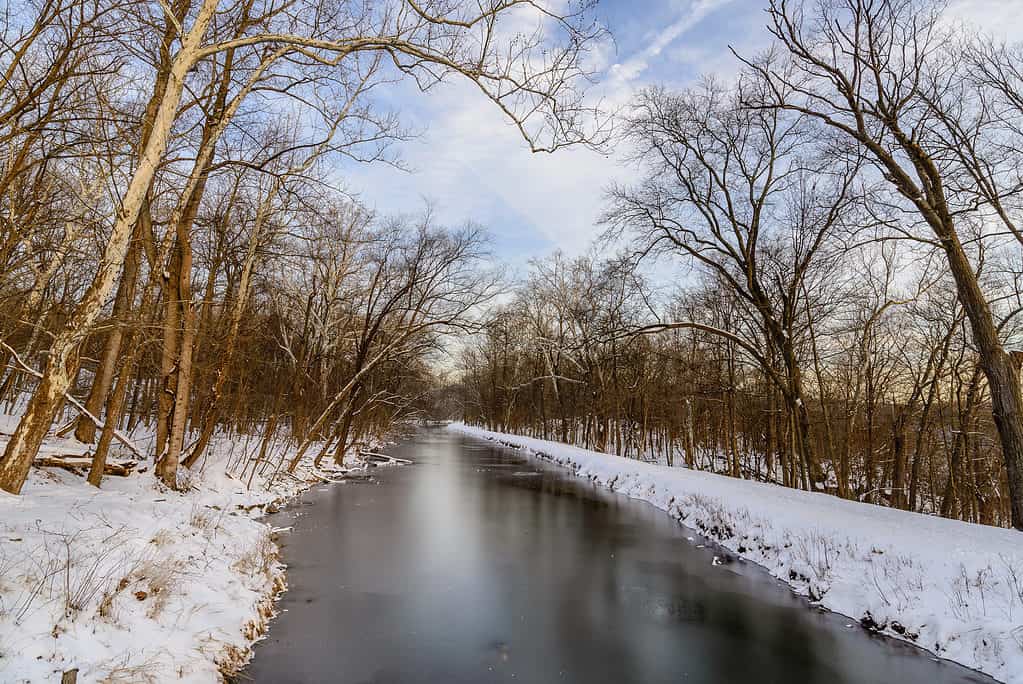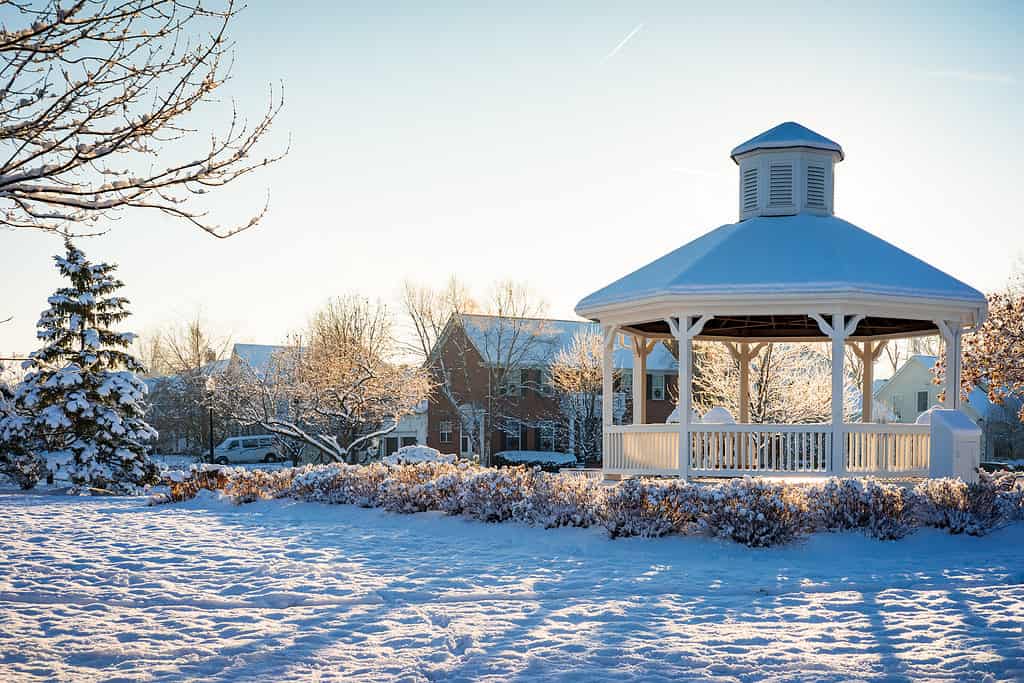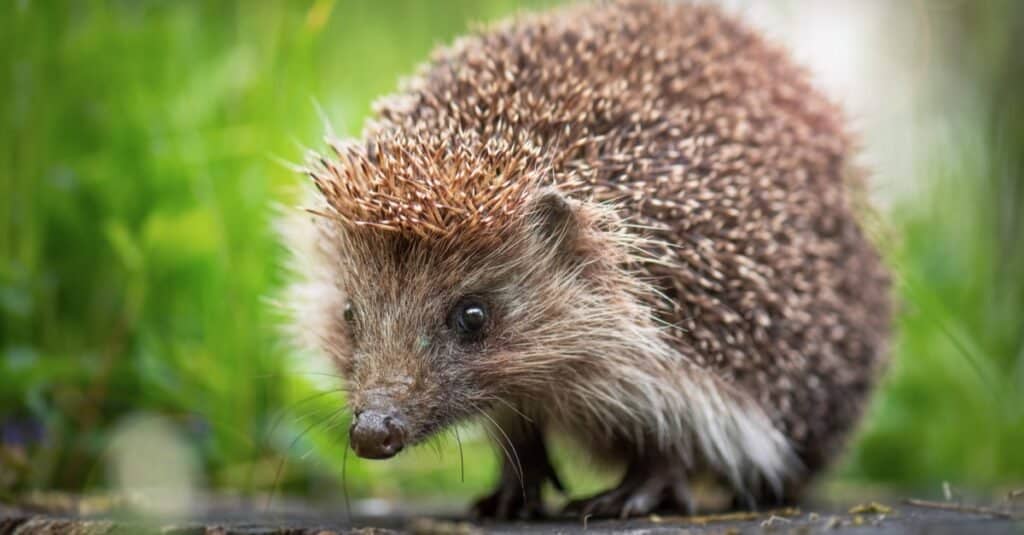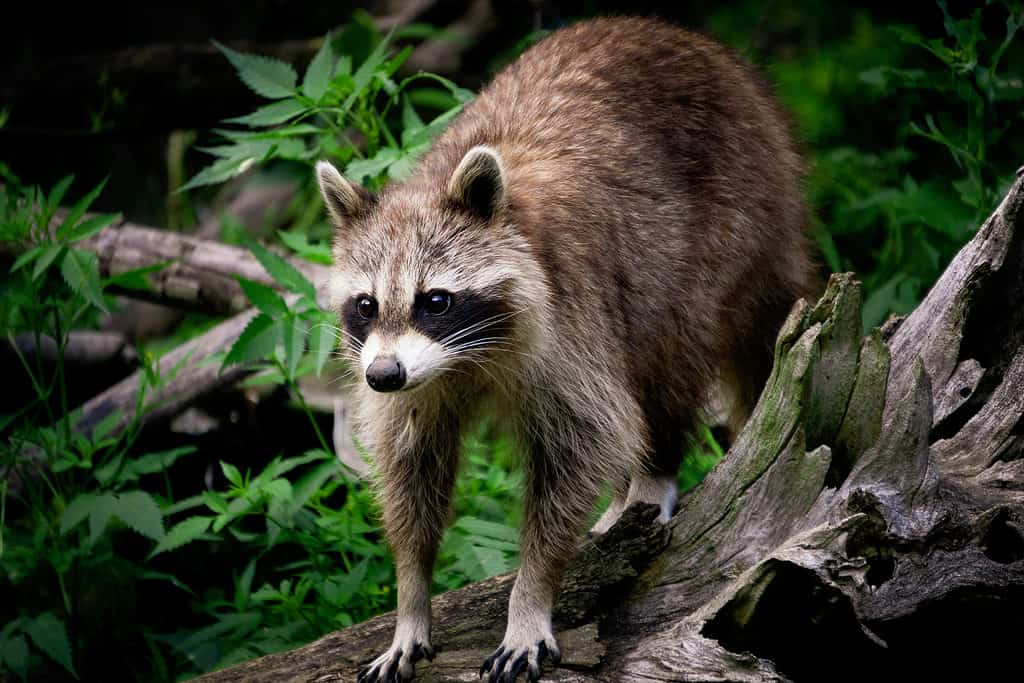Also referred to as the Buckeye State, Ohio is located in the US mid-western region and is the seventh most populous state with over 11.8 million people. It is the 34th largest state in the United States. Ohio got its name from the Ohio River, which flows through the state. As a result, most places in the state experience humid climates accompanied by hot summers, while winters are cold and snowy. However, the southern regions are pretty extreme, characterized by a humid subtropical climate. During winter, most parts of the state record heavy snowfall. Keep reading to learn about the coldest temperature ever recorded in Ohio, along with climate information and the region’s flora and fauna.
The Coldest Temperature Ever Recorded in Ohio

The coldest temperature ever recorded in Ohio was -39 degrees Fahrenheit on February 10, 1899.
©iStock.com/golaizola
Ohio State is no stranger to cold seasons, and the coldest temperature ever recorded in the state was -39 degrees Fahrenheit, measured on February 10, 1899. This record-breaking temperature was recorded in the small town of Milligan during a massive blizzard that led to extreme weather for over a week. Unfortunately, not much is documented about the event or what happened afterward.
The Ohio Blizzards of 1976-1977 and 1977-1978
Ohio winters can be unpredictable. Some are mild, while others are super snowy. The winters of 1976-1977 and 1977-1978 are remembered as the coldest in the history of Cleveland, with the region experiencing many days of below-zero temperatures.
The bitter cold made headlines in January 1977 after temperatures dropped to -17 degrees Fahrenheit. They remained below zero for over 58 hours! At the end of the month, a blizzard hit the region, forcing locals to stay indoors. As February came, the brutal cold spell continued with temperatures of -20 degrees.
The region warmed up a little as spring came, only for snow to return in November. Overall, Cleveland experienced a record 20 days of below-zero temperatures in 1977. As locals recovered from the harsh weather of 1977, it became clear the record-breaking cold was not over, as a superbomb blizzard hit in January 1978.
Brief History of Milligan, Ohio
Milligan was a preexisting unincorporated town located in Perry County, Ohio. Its fiercely cold temperatures were attributed to its location at the center of Moxahala Creek Valley, through which cold air masses from the surrounding hills flow.
On February 10, 1899, Steve Eveland, who operated the United States Bureau Station in Ohio, reported the temperature as -39 degrees Fahrenheit, which has remained the coldest in the state.
The town was situated on State Route 93 in the middle of New Lexington and Crooksville. This route houses the Milligan Post Office, which was established in 1893 and remained operational until 1902. While Milligan no longer exists on the map, it has held the spot for the coldest place in Ohio for more than a century.
The Climate of Ohio

Freezing temperatures and snow flurries may appear around November and persist until April.
©Coral Sand and Assoc/Shutterstock.com
Ohio experiences a continental climate that exhibits huge variations every season. The winters are cold, and the summers are humid and warm. Freezing temperatures and snow flurries may appear around November and persist until April, but high snowfall records are marked from December to March.
Ohio Decembers are cold and marked by temperatures below freezing point. The average temperature can be as low as 26.6 degrees Fahrenheit and as high as 41 degrees Fahrenheit. During this month, the state’s northern parts experience an average snowfall of 9 inches, while the southern regions record about 3 inches.
January is the coldest and snowiest month in Ohio. However, the temperatures during this month waver a lot and can be as low as 21.2 degrees Fahrenheit and as high as 37.4 degrees Fahrenheit.
Northern Ohio receives an average snowfall of 11 inches, with Cleveland getting a whopping 18 inches. On the other hand, the southern parts only receive an average of 6 inches.
February is usually chilly, but with much higher temperatures than the previous month. Average temperatures in this month range from 24.8 to 41 degrees Fahrenheit. Snowfall in the northern parts average 8.7 inches, while the southern regions record 4.5 inches.
March is the last month of winter in Ohio State. As spring steadily approaches, temperatures rise. Throughout the month, temperatures reach a maximum of 51.8 degrees Fahrenheit and a minimum of 28.4 degrees Fahrenheit. The north gets 6.6 inches of snow, and the south gets 2.2 inches.
Common Animals that Survive the Ohio Winter
Winter is a time of dormancy and scarcity, with many animals migrating to southern and central regions in search of food and warmth. However, non-migrating animals have adapted to survive the season through hibernation. These include hedgehogs, river otters, skunks, white-tailed deer, and raccoons.
Hedgehogs

From November through April, hedgehogs hibernate, likely changing their nesting locations at least once during winter.
©DenisNata/Shutterstock.com
Hedgehogs are some of the animals that are adapted to the cold winters of Ohio. They survive through hibernation. During this period, their body temperature drops to align with their surroundings, and they go into a state known as torpor. This state saves immense amounts of energy by slowing down all body activities, such as breathing and heartrate.
Hedgehogs hibernate from November through April, likely changing their nesting locations at least once during winter. Therefore, they may be spotted during this time. In mild winters, these animals can be active throughout November and December.
When hibernating, hedgehogs survive on fat accumulated throughout summer. Therefore, eating enough before hibernation is paramount for the animals’ survival. It can be risky to disturb hibernating hedgehogs, as they use their accumulated energy to regain their active state.
River Otters
As semi-aquatic animals, river otters can survive on land and in water, contributing to their survival during extreme cold. Their primary diet consists of fish. They prefer flowing water such as streams and rivers during winter, since they don’t freeze like stagnant ponds and lakes. However, even when water freezes, they can dig their way into the water underneath. If they do not have access to fish, they dig up hibernating frogs to replenish.
Otters have a unique coat of fur that consists of guard hairs to keep away any invading organisms. In addition, their wavy underfur helps trap warm air within. Their outer layer forms an oily coat that makes it water-repellant, keeping ice and water away from their body. Thanks to this adaptation, river otters can dive and swim freely in the icy winter waters.
Skunks
Skunks do not fully hibernate during winter, but they do become pretty idle. During this period, they search for an ideal den location that will make it easier to access food and water, mostly on human property. Around human homes, they may camp out under woodsheds, houses, basements, woodpiles, or anywhere they deem fit.
Skunks primarily feed on grubs, just like moles and possums. They may invade a lawn or garden in search of insect larvae. Grubs are easily found during winter, as they are dormant in anticipation of their spring metamorphosis. As nocturnal animals, skunks feed at night.
Since skunks forage less during winter, foods like pet kibble left outside or unsecured garbage will attract them. If the idea of skunks around your home concerns you, make your home less attractive to them by properly securing your garbage and sealing any skunk-accessible openings.
White-Tailed Deer
White-tailed deer are found in diverse parts of the United States, including Ohio. As a result, they are well adapted for different climatic conditions.
Deers survive the harsh winter cold by adequately insulating their bodies. During fall, deer’s summer coat slowly changes to longer, thicker winter hair with guard strands. It also grows a thicker undercoat. The winter coat aids insulation by absorbing and retaining massive heat compared to a summer coat and offers protection from water and ice. They also have oil-producing glands that make their fur water-repellent, which comes in handy when it is snowing. In addition, their bodies reserve extra layers of fat in fall, further contributing to insulation.
Behavior-wise, white-tailed deer become less active, which lowers their metabolism by half and enables them to eat less while saving more energy. They feed on their regular diet, like twigs, grasses, stems, fruits, and nuts. As browsers, they do not need access to underneath the snow to feed.
Raccoons

These fury critters survive the cold winters with the help of thick winter coats that help them retain heat.
©John Wherley/Shutterstock.com
Raccoons are also common in Ohio and are among the animals that stay during winter. During this season, they spend most of their time sleeping, which helps them to conserve energy.
Most go into a torpor period, with reduced metabolism and body temperatures. They make shelters for themselves by digging under decks or porches or settling in groundhog holes or abandoned burrows. You may also find them denning up under large rocks and hollow trees. Raccoons survive the cold winters with the help of thick winter coats that help them retain heat. They also have an accumulation of fat that helps them go for a long time without eating.
They are lucky as they eat almost anything, including nuts, berries, human food leftovers, fish, insects, fruits, and bird eggs. Raccoons also feed on squirrels and mice, so they rarely experience food shortages.
Common Plants that Survive the Ohio Winter
With unpredictable winters in Ohio, it can get tricky for garden-and-landscape-project lovers. The winds are biting, and snow may cover the entire ground.
The Christmas Rose

As cold-loving flowers, Christmas roses will make your porch beautiful throughout the season.
©iStock.com/Edda Dupree
Some plants, such as the Christmas rose, can sustain the snow-heavy environment.
These roses bloom at the beginning of winter. As cold-loving flowers, they will make your porch beautiful throughout the season. They are perennial flowers and can keep growing for up to three years.
The American Beech
You will also find the American beech in bloom during the coldest months in Ohio. They have pointy buds that are characterized by a smooth grey back that is pretty conspicuous. Their leaves remain intact all the way to spring.
The Winterberry
This shrub sheds its leaves during fall, revealing gold or red berries, which contrast magnificently against the snow. These beautiful berries can be used for decoration during the holiday season, as they retain their shape nicely. During spring, this shrub will develop white flowers that usher in new berries when the leaves fall.
Final Thoughts
While the coldest temperature in Ohio was recorded over a century ago, the state continues to encounter its share of cold winters and blizzards. Fortunately, many animals are wonderfully adapted to thrive in this harsh climate.
Up Next:
- 12 Beautiful Trees Native to Ohio
- Discover the Fastest Animals in Ohio
- Discover the Snowiest Place in Ohio
The photo featured at the top of this post is © Kenneth Sponsler/Shutterstock.com
Thank you for reading! Have some feedback for us? Contact the AZ Animals editorial team.






